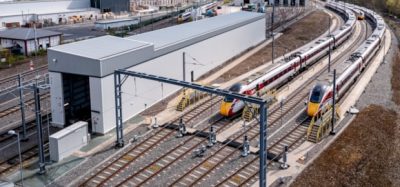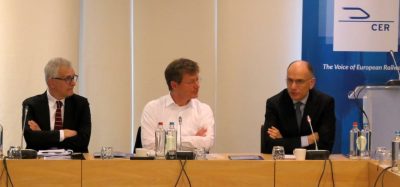Driving forward to the railway system of tomorrow…
Posted: 31 January 2017 | | No comments yet
Welcoming anything new is always an exciting and often eagerly anticipated event. The arrival of this new year should be the same, but just what can we expect and how should the railway sector rise to the challenge?
So many people said that they couldn’t wait to leave 2016 behind. But if one takes a last look at it, there are a number of significant events that merit praise.
Rail research took a strategic step forward with the commencement of work within the Shift2Rail Joint Undertaking (JU). With nearly €1 billion of joint sector and EU investment, the JU members now have an excellent platform from which to launch the development that is vital to provide a railway system that is sufficiently attractive to customers to make it their land transportation mode of choice.
Elsewhere, the political agenda was complemented by the arrival in the statute books of the Fourth Railway Package. At the heart of this is further synergising the structure of the railway system and, amongst a number of other elements, rationalising and accelerating the authorisation process for putting rail vehicles into revenue-earning service. Of course it is now up to the sector – and in particular the railway operating community (ROC) of railway undertakings and infrastructure managers – to develop the steps that will lead to the implementation of the package. This will not happen overnight and will require considerable coordination and collaboration amongst all the stakeholders.
In June 2016 the Gotthard Base Tunnel in Switzerland was opened and is set to make a huge difference to journey times and to capacity along this core European corridor. Maximising capacity and decongesting Europe’s city centres is an important role for the railway sector with implementation of ERTMS being the main focus.
But there remains a high degree of uncertainty and potential for change in 2017. Consider, for example, the impact that the UK’s Brexit vote may have on the fabric of the European project; the inauguration of a new President in the USA and the associated impact this might signal for the global economy); as well as the number of top-level elections within Europe – not least of course in France and Germany – there is much to anticipate.
When we look back at 2017 we need to be able to say that it was a year of consolidation and growth. Too many people use the adage that you shouldn’t be looking over your shoulder as it can lead to dwelling on the past, but it has to be said that there are far more lessons learned by observing the past and not repeating failures as we move forward!
The railway sector must become stronger and build unity within the sector so that rail becomes the land transportation mode of choice.
There is much that the sector has to offer the customer by making the journey experience more attractive. The customer is not interested in the concept of collaboration, digitalisation, innovation and standardisation – all of which need to be the bywords for 2017. The customer is more focussed on cost, connectivity, reliability and safety. However, all of these components must come together to form a complementary and harmonious whole.
Building on the core vision for the future Europe railway system that the rail sector set out in its 2013 ‘Challenge 2050’ and which the ROC complemented with their ‘Rail Technical Strategy, Europe’ in 2015, there has been a drive towards harmonising the thinking around what should be the design, construction, operation, maintenance and renewal components of the railway system as it sets out the challenges of the future. These two documents are about to be joined by the latest sibling in the ROC family: the ‘Railway Standardisation Strategy, Europe’ (RSSE).
All of these are designed to act as a foundation on which the sector can construct a sustainable future and also serve as a shining beacon to influence Shift2Rail when building its programme. They represent a strong indication of what the ROC aims to focus on and include the actors providing the service to, and interfacing with, the end-user of the system.
Innovation programmes will of course only be part of the solution. They are only ever able to scratch the surface of what is needed to create a sustainable system for tomorrow. The UIC has been actively working in the areas of research, innovation and standardisation of the railway system for over 90 years. It is very easy to forget the depth and breadth of such a heritage when there is so much attention being paid to European interoperability.
The UIC runs a work programme of research and development for its stakeholder companies that continues to grow in importance and is recognised by those stakeholders as being a strong complementary framework to the EU-funded programmes in Europe. This year the programme will cover projects that range from signalling via energy through to infrastructure, operations, sustainable development and also the essential task of developing the freight business.
We should also learn from the experiences of our forebears – those that built the railways on which we operate today. We need to learn to avoid the traps, develop the best bits and use them as a catapult to boost the image and attractiveness of the system of tomorrow.
The UIC has long been the corporate custodian of this experience on behalf of the railway community. With its suite of former leaflets being the focus of a 21st century makeover, the UIC will continue to publish a wide range of solutions (IRS1) that will benefit the operating community in particular and the wider railway sector in general.
This is an important component in ensuring that the railway system of tomorrow is designed, constructed, operated and maintained in a holistic fashion. In the words of the outgoing US President, “yes, we can!” and together, the railway community will.






